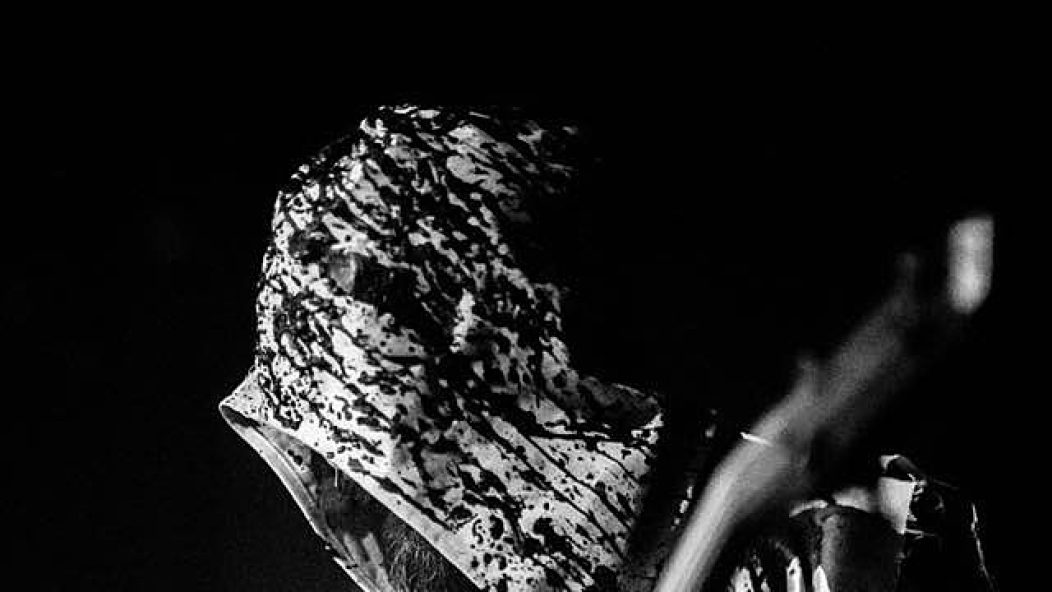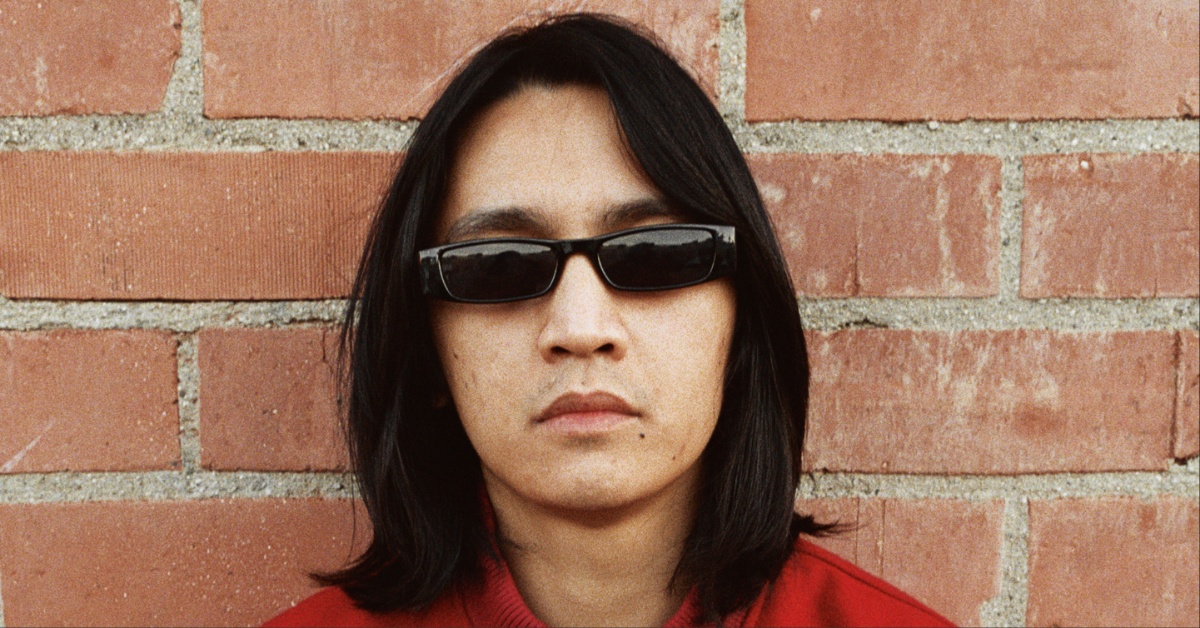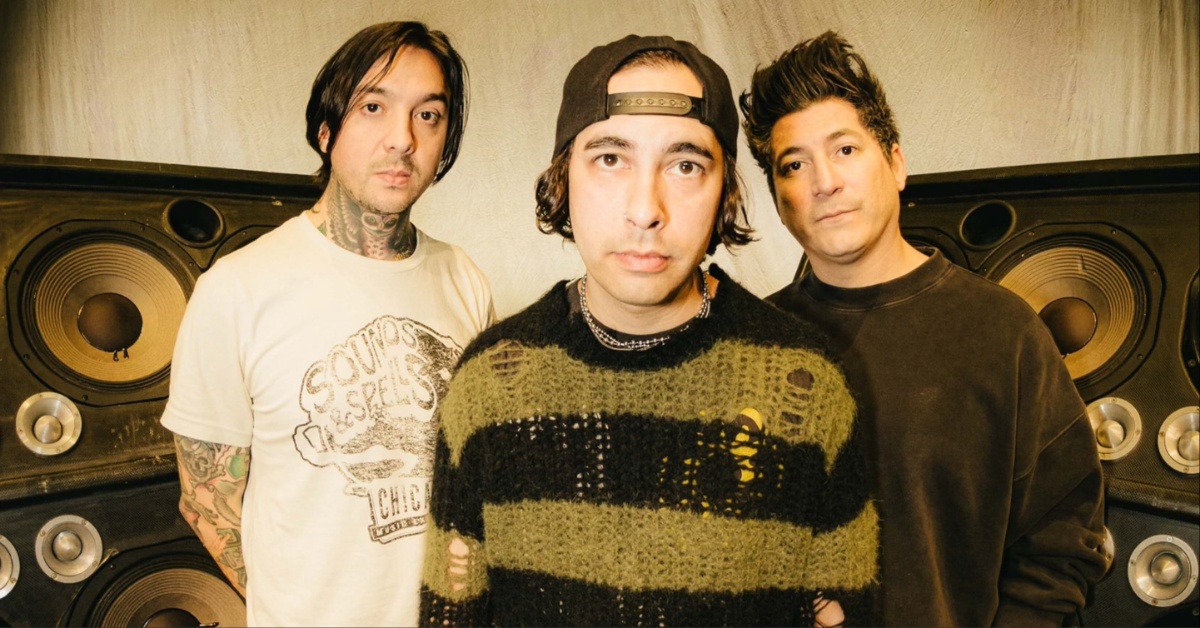
Who is John Frum?
…
John Frum.
Say the name out loud. John. Frum. You can hear the periods after both words. Both land with a dull thud. Those eight letters are a cover, an inviting bow wrapped around pandora’s box.
When I asked bassist Liam Wilson how his new band, a collaboration with Matt Hollenberg (a guitarist for avant garde jazz legend John Zorn), Eli Litwin (Knife The Glitter) & Derek Rydquist (former vocalist of The Faceless) settled on the name, he tore the packing off of that box and turned it into a mobius strip of influences and allusions.
Wilson is an odd duck. When we spoke to him over the phone about John Frum’s upcoming debut A Stirring in the Noos he referenced the Burning Man festival with the casual air of a retired WASP mentioning their latest trip to Martha’s Vineyard. He brought up panspermia and biodynamic wine like he was discussing flavors of ice cream. Wilson has a habit of starting sentences with “Again” regardless of whether he’s made the point before. At first it seems like a nervous tic, but the more he did it the more it felt a bit zen. Like the idea he’s trying to express existed before him, and he was only repeating it. It’s easy to read him this way because Wilson is a pretty heady dude. So why John Frum?
“Because Portal was taken.” Wilson jokes.
…
…
Here’s the long answer.
John Frum is a myth. A collectively agreed upon lie. John Frum is the central figure in what is commonly referred to as a Cargo Cult. During the WWII, the US Air Force would use islands in the nation of Vanuatu as base of operations in the Pacific Theater. To the indigenous people of the region, who previously had no awareness of Americans, the whole thing was somewhat inexplicable. The soldiers arrived from out of the sky on airplanes, deposited radios & spam, and vanished just as suddenly. Since then the people of the island of Tanna developed a religion around a messianic American that would bring them endless riches in the form of cargo.
An article by Paul Raffael published in the Smithsonian on the John Frum phenomenon implies that the leader of this religion consciously used John Frum as rallying point to resist colonial rule.
…
“It’s possible that local leaders conceived of John Frum as a powerful white-skinned ally in the fight against the colonials, who were attempting to crush much of the islanders’ culture and prod them into Christianity.”
…
This complicates the condescending idea that Cargo Cults are the result of naivety on the part of the cult. They aren’t just comical misunderstandings, they are symbolic, a deliberate way of reordering the world to express a community’s wants and needs.
…
A BBC Documentary on the John Frum Cargo Cult
…
Wilson made it clear that the band wanted to avoid addressing this origin too explicitly in their music. For one, they didn’t want to lock themselves into a single aesthetic. Also, John Frum is not interested in the risk of cultural appropriation.
“I’m not saying that it won’t be full of inspiration, I mean shit look at the milage Nile has gotten off Egypt. However, I thought that it felt limited. I want it to be open sourced and a full on collaboration. Almost like how Hindu religions just invent different deities for whatever the situation calls for, I feel like John Frum songs in a sense are like H.P. Lovecraft short stories that all in some way riff off this idea of man’s relationship to god and the universe. I think if we went more narrow with the lyrics it would have just grown pretty stale.” Wilson says, “I really wanted to be sure that nothing about this seemed like I was just cashing in. The last thing I want to do is make a religion out of their religion. Or mock it in anyway. John Frum is not that.”
Instead Wilson and his bandmates use the cargo cult surrounding John Frum as a roadmap, one that points at the malleability of reality. The band litter their social media with quotes that read like Assassin’s Creed outtakes. “There are no facts, only interpretations”. This isn’t the first time this concept, paraphrased from Hassan-i-Sabbah, has found its way into heavy music. Isis used a similar concept as the basis for In The Absence Of Truth. But what was an intellectual curiosity in 2006 is now an accurate reading of the temperature. Even though Wilson denied any intention of commenting on the mess of “alternative facts” or “fake news”, it’s undeniable that these themes resonate beyond the desk of Sean Spicer. Media saturation gives ammo to any and all viewpoints. Anyone can build a bubble that confirms their own beliefs, walling off anything that conflicts with their version of reality.
John Frum plant C4 at the base of that wall and denote it with glee. To anyone unfamiliar with extreme metal, their music will seem just as alien as an iphone dropped into the jungle. Any sufficiently heavy metal is indistinguishable from magic. But to those in the know, John Frum are the latest in a string of bands pushing metal into highly dissonant and ugly places. Traces of Canadian acts like Gorguts or Thantifaxath weave through John Frum’s music, as well as American death metal weirdos like Baring Teeth. But the band that Wilson makes a point of mentioning multiple times is Portal. Not only when cracking jokes about their name, but in high praise for their theatrical live performances and their mind-bending approach to the genre.
“I like them almost more as visual artists than as music. To me it’s almost like performance art. I remember Portal records the way I remember Mark Rothko paintings.”
But even if Wilson is talking about his music in visual and conceptual terms, the result is more primal than professorial. John Frum aren’t exactly making calls to the pit, but given Wilson, Litwin, & Hollenberg’s backgrounds, they tend to lean on rhythms in a way that’s distinctly hardcore.
Wilson doesn’t seem to view those distinctions, between hardcore and metal, real and unreal, as valuable. He accepts inspiration from wherever it comes, whether that’s Burning Man or Burnt By The Sun. This omnivorous attitude is in line with the way that Wilson has worked in the music. It may seem obvious, but Wilson occupies a lot of his time with music, and takes it seriously.
“It’s my stock market. Some people watch sports, but I talk about Metallica like they’re my favorite sports team. I’m an only child, so there’s something about that, it gave me something to retreat into. I relate to the world through the eyes of music. Music is the torch to which I light everything. It’s how I see in the dark.”
…
…
In addition to his long stint as the bass player for The Dillinger Escape Plan, Wilson also played in Starkweather, worked at local venues running the door and doing sound, and more recently spent time as a contributor to Talkhouse (his piece on the Rockabye Baby! series is legit great).
“I work in the music industry and I want to use all the tools at my disposal to express myself.” Wilson explains, adding that the experience of working on the other side of the creator/critic divide has changed how viewed coverage of his own projects. “I’m really vigilant about what people say about John Frum. In the last few years I felt like Dillinger were kind of untouchable and I couldn’t really trust what people were saying. Not that I want to have my ego smashed but I am an artist and I like growth. I’m way more nervous about how John Frum is accepted, because it is different from what people would expect from me.”
Wilson is right to make the distinction. Anyone expecting The Dillinger Escape Plan’s madcap time changes or full throated choruses is going to be thrown off by A Stirring in the Noos. The record is just as acrobatic as The Dillinger Escape Plan were, but John Frum songs aren’t balance beams, they’re crowbars. After two tracks of airtight death metal, “Memory Palace” pulls the hinges off the doors of perception. The song moves in inches, burying the listener under the weight of it’s lurching rhythm until going cosmic with a guitar solo careens across the track with no regard for its surroundings.
“All the solos on the record, drum, guitar, everything, are all improvised. Most of them are not comped, it’s all single takes. We want to invite more of that in, that mystical muse-y-ness or a sense of something greater.”
…
…
From that guitar solo, a reminder that Hollenberg’s position as a John Zorn sideman is no accident, the album embraces it’s woo-ness to great effect. Tempos splutter, bridges elongate, and the band take a lengthy instrumental diversion on “He Come”. All of this comes to a head when they snap back to reality on the fast paced “Wasting Subtle Body”. The dream ends, the trip fades, and we come back down to reality.
A Stirring in the Noos is an impressive debut, but it’s important to remember that the members of John Frum aren’t some plucky gang of kids. “Eli’s a school teacher. Eli and I are both dads. There are certain hurdles to getting this off the ground. All of us are ambitious, obviously, I don’t think anyone throws down on a record like this without a certain drive. But in terms of how often we’ll get to play, I don’t know.”
Even without the burdens of daily life, Wilson still has a world dominating hardcore band to tour with. Despite breaking up last year (something we were pretty bummed about) The Dillinger Escape Plan are still in the long process of winding down, playing shows, and narrowly surviving disaster.
“This is my own personal, semi-superstitious view, but I think it’s kind of odd that we just got into a bus collision situation. That never happened to us before. And I know that it’s statistics or whatever, but it’s almost like the universe saw a chink in our armor and went for it.”
Universal conspiracy or no, the long fade out on Dillinger’s career naturally lends itself to morbid thinking. Committing your life to a band that requires extreme musical output on top of a relentless touring schedule will take the life out of anyone, music junkie or no.
“I really don’t know where I stand, it depends when you talk to me. If I just walked off stage I’ll look over at Greg [Puciato] and think ‘we’re going to not do this? This is insane! This is what I do. I was born for this shit.’ I’ve chased my dreams for 20 years. I still want to set an example for my kids. If you want to chase your dreams then I’m the dad for you. But there is a part where my wife and my kids carry a burden while I’m on tour. It’s taxing. You know, I don’t get paid for the hour that I’m on stage, I get paid for the 23 it took to get there, or the 23 that I’m away from home.” says Wilson “There are a lot of things about Dillinger ending that give me the opportunity to address some things I’ve left unaddressed. Like giving my wife a chance to actually restart her career, because she’s been on pause for my sake.”
Even as the need to attend to his adult responsibilities increases, it’s clear that Wilson and company aren’t just doing John Frum as a one-off. It took them six year just to complete A Stirring in the Noos so timing isn’t an issue. Whether or not they tour extensively is a trickier questions, although Wilson’s allusions to Portal and Genesis suggest that any live shows will be a sight to behold.
Again, who is John Frum? It isn’t clear yet. But if music is Wilson’s torch, then the answer will lie in the shadows he casts.
…
…











